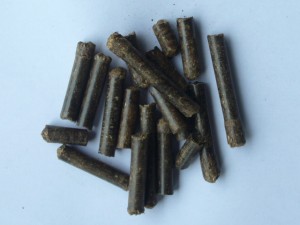
Moisture is one of the intrinsic nature for any of the biomass substance. The EFB pellet moisture is the important parameter affecting the calorific value. Base on difference biomass material, it may consist difference moisture level which eventually affecting the net calorific value. For instance a Shredded EFB fibre always consist moisture around 60%. On the other hand, Mesocarp fibre is lower in moisture level. However, an EFB pellet which process from Grinded-EFB fibre only consist of 10% moisture level, this is 4 times lower than it originate source.
In this article we are going to discuss about the impact between high vs. low moisture level.
Why Moisture Cares?
Calorific value is the main concern for biomass substance. Customer is willing to pay higher for low moisture substance as compare to higher moisture substance.
From our instinct, high moisture level substance is not preferable for burning process. In order to get a clearer picture about the impact for moisture level, we need to compare the net calorific value. By comparing the net calorific value, user will be easier to make appropriate judgment.
Calorific value for high and low moisture Level
EFB pellet is made from shredded EFB fibre. Let us compare EFB pellet together with Shredded

EFB fibre.
A shredded EFB fibre with 60% moisture claimed having a gross calorific value at 3200kcal/kg. After considering the 60% moisture level, the net calorific value for shredded EFB fibre drop to 960kcal/kg.
An EFB pellet which consists of 10% moisture is having a gross calorific value of 4900kcal/kg. The net calorific value for EFB pellet is 4070kcal/kg.
In actual biomass boiler process, we could notice only 960kcal/kg of heat energy will transfer to the heating process, other heat energy 2240kcal/kg has been consumed because of the moisture level. In other words, there is 70% of heat energy lost due to the moisture.
From this example, we know the reason why the biomass boiler or factory owner request lower moisture level. Perhaps the 70% lost is solely from the substance heat energy stand point, it also imply a substantial portion of the transportation cost has been consume by the unwanted moisture.
Calorific value for EFB pellet
An EFB pellet make from shredded EFB fibre. In a standard EFB pellet process, the fibre will send to grind and dry before moving to the pellet process.
The EFB pellet comes with the range of moisture of 8-15%. With low moisture level, it implies that most of the gross calorific value will be bringing to net calorific value. A gross calorific value for an EFB pellet is 4900kcal/kg and the net calorific value is 4070kcal/kg. Around 20% heat energy lost due to moisture concern.
High moisture or Low moisture?
By comparing the EFB pellet and shredded EFB fibre, we are seeing and heat energy ratio of 4.2 times, this means from net calorific value stand point, an EFB pellet should sell 4.2 times higher than the shredded EFB fibre price.
Please bare in mind, this has not consider the shipping cost, storage space as well as other hygiene control through out the transportation process.

Hi, this is a comment.
To delete a comment, just log in and view the post's comments. There you will have the option to edit or delete them.
Hello, my question is this, what is the difference between, Bio mas briquette and bio mas pellets, and its Calorific value. Which is the economically best.
We do not produce briquette so that unable to give you the exact difference between these 2 commodities. However for my understanding, both biomass are producing similar heat value.